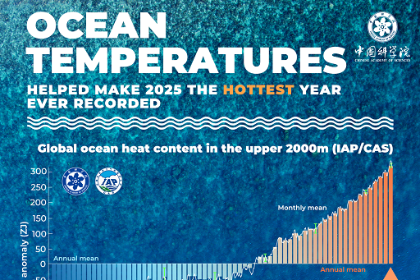Solidarity, vigilance essential to ending pandemic crisis


A new wave of COVID-19 infections was reported in the past few days in the city. And perhaps even more concerning is that a considerable percentage of these new cases have been traced to a large cluster of 187 infections that originated from a dance club.
Of the 80 new cases reported on Tuesday, 55 have been linked to the dance club cluster, which is now reported to be largest of its kind since the virus hit Hong Kong in January.
A “staycation” cluster also emerged in last week, as locals — many of whom neglected to wear masks — have been flocking to local hotels and guesthouses.
In one case, over 30 guests attended a birthday party in a hotel and a spike in cases shortly followed.
It is just as we feared: We are well and truly in the midst of a fourth wave.
We, doctors, have long been warning the government and the public that the cold weather would exacerbate the infection rate. Travelers from Nepal carrying a new strain of the virus have also played a part in bringing forth the fourth wave.
It also goes without saying that there are still “invisible carriers” among us who are unknowingly spreading the virus.
Just this past Monday, all children in Grades 1 to 3 have had their classes suspended for a fortnight, due to the 439 outbreaks — which equals over 4,000 cases — of upper respiratory tract infections. Most of these cases have been reported across various kindergartens and primary schools.
Whilst these infections are still being reported as “upper respiratory tract infections”, it’s still serious cause for concern, especially since it appears particularly virulent among young children, who are obviously a vulnerable group.
But at the present, mandatory testing is designed to target staff working at elderly nursing homes and taxi drivers.
The fourth wave may be the worst wave to date as infections are rising at an unprecedented rate. We need to swiftly cut these chains of infection, otherwise up to 10,000 people will be infected and our healthcare system cannot take so much strain.
This much is clear: we need to step-up preventative measures now, as the present ones are — as exhibited by the current state of things — woefully inadequate.
Strict gate-keeping measures at our borders and a top-of-the-line tracking system for those going into quarantine are just some of the things we can do to curb infections. But time and time again, there has been a failure to enforce these measures, and the latest strain found in the Nepalese travelers is indicative of this failure.
Last month, an influx of travelers from Nepal arrived, along with a new strain of the virus. After community infections cropped up in Mui Wo, Tung Chung and Tai Po, virologists set to work to analyze the viral genomes of these new infections.
Professor Leo Poon Lit-man, who heads the School of Public Health Laboratory Science within the University of Hong Kong, reported that his team confirmed a near-perfect match between the viral genomes of the original Nepalese strain and the imported Nepalese strain in Hong Kong.
Regarding said strain and the fourth wave, Poon postulated that this strain very likely played a part in sparking the fourth wave. He further added that transmissions are likely to have occurred at the airport, at hotels designated for quarantine, and on the transportation designated for those going into quarantine.
As for those who quarantine at home, there are very few measures in place to ensure that these people are adhering to the rules. How can we know for certain that they are staying at home, and not seeing others?
This is when community-wide vigilance comes into play.
We would be fools to let our guard down at any point, even if the fourth wave eventually wanes. Every one of us has a responsibility to remain vigilant, and this means staying home unless it is absolutely necessary to go out. Then one must wear face masks, and carry out strict personal hygiene at all times.
If we truly wish to see an end to this virus, then I could not stress enough the need for community-wide testing.
I have said time and time again that we need to emulate the Chinese mainland, as they have done an exemplary job in containing the virus to extremely low levels and at most of the time, eliminated the problem. Community-wide testing in cities such as Wuhan and Qingdao — cities with populations larger than Hong Kong — have done a world of good.
Strict border controls have also stemmed the tide of imported cases in the mainland.
If we wish to reinvigorate our economy, then we need to re-open our boundaries to the mainland; it is abundantly clear what needs to be done.
We should also observe how certain nations are failing to contain their own national outbreak and take note of what not to do in a pandemic.
In the United Kingdom, the British government have been facing unrelenting backlash from the public over its inconsistent application of safety measures. At 55,230 deaths, the UK currently has the fifth highest death toll caused by COVID-19 by country. The public has continually expressed its anger and confusion over the government’s “confusing and inconsistent” measures in containing the outbreak.
As for the United States, which currently has the highest death toll in the world at over 263,351 deaths, there appears to be no strategy for tackling the virus.
And while news of successful vaccine trials at pharmaceutical companies such as Pfizer have been making headlines in recent weeks, we can only remain cautiously optimistic.
For a vaccine to be successful, it requires a certain percentage of inoculations among a population; many of us know this as “herd immunity”. The threshold for COVID-19 is still unclear, as estimates range from 43 percent to 70 percent and are subject to differing characteristics (e.g., social activity) within populations.
If we are to go by the highest threshold for successful herd immunity against COVID-19, then we need to inoculate 5.2 million Hongkongers.
There is the additional concern of the duration of a vaccine’s effectiveness, as evidence suggests that the effectiveness of certain antibodies can dissipate over time.
For now, we must continue to fight against the virus without the safety net of a vaccine. Only through a united community and vigilance can we have any hope to see the end of this crisis.
The author is president of Wisdom Hong Kong, a think tank.
The views do not necessarily reflect those of China Daily.

































